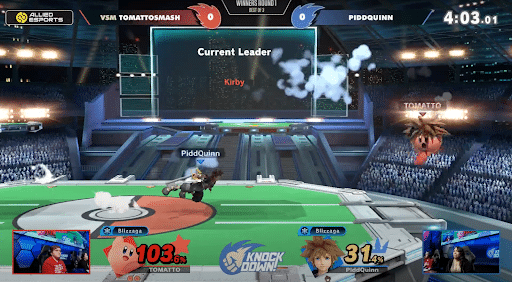
The Best Competitive Stages in Smash Ultimate (Ranked)
Super Smash Bros. Ultimate boasts an extensive roster of over 100 stages, each offering unique layouts and hazards.
However, in competitive play, not all stages are created equal. Tournament organizers and players have distilled this vast selection to a curated list of stages promoting fair and balanced gameplay.
This article delves into the top competitive stages in Smash Ultimate, highlighting their features and why they’ve become staples in the competitive scene.
Criteria for Competitive Viability
When evaluating stages for competitive play, several key factors are considered:
- Neutrality: Stages should not favor any particular character or playstyle.
- Simplicity: Layouts that minimize randomness and complexity are preferred.
- Hazard Control: The ability to disable stage hazards ensures consistent gameplay.
- Platform Configuration: Platforms should offer strategic options without introducing imbalance.
These criteria help maintain a level playing field, ensuring player skill rather than stage gimmicks decides matches.
Top Competitive Stages
Based on community consensus and tournament usage, the following stages are widely regarded as the best for competitive play:
- Battlefield: Featuring a tri-platform layout, Battlefield is a quintessential neutral stage that accommodates various playstyles.
- Final Destination: With a flat surface and no platforms, this stage emphasizes ground-based combat and projectile play.
- Pokémon Stadium 2: This game offers a balanced layout with two platforms and is a favorite for its versatility and aesthetic appeal.
- Smashville: Known for its single moving platform, it provides dynamic yet fair gameplay.
- Town and City: Its changing platform configurations introduce variety while maintaining competitive integrity.
These stages are commonly featured in tournament rulesets, reflecting their acceptance within the competitive community.
How Stage Choice Shapes Competitive Matches
While character skill and player execution are crucial in Super Smash Bros. Ultimate, stage selection often plays a silent but game-changing role in high-level play. A stage can alter movement options, combo potential, recovery safety, and projectile effectiveness.
Competitive players understand that not every “neutral” stage is truly neutral — some characters excel on specific layouts due to how they interact with the platforms or ledge spacing.
For example, swordfighters like Lucina or Chrom often thrive on Final Destination due to its flat terrain that favors ground control. In contrast, combo-heavy characters like Mario or Palutena perform better on Battlefield because they can extend aerial strings using the tri-platform setup.
Likewise, zoners and projectile-based characters may prefer wider stages like Town and City, where they have room to disengage and reset neutral. Understanding these relationships is key to choosing the right stage for your character and your opponent’s.
Smart Counterpicks: When & Why They Matter
In tournament rulesets, counterpicking is a strategic layer where the losing player of a match selects the next stage. This mechanic is not just for comfort — it can flip a matchup. Knowing which stages to ban and which to favor is a skill that separates casual competitors from bracket climbers.
You’re a Fox main who lost to a Ness on Smashville. You might want to ban Battlefield, where Ness can shark platforms with up-air juggles, and instead counterpick Pokémon Stadium 2, giving you more horizontal room to zone and reset. Similarly, if you play Donkey Kong, avoiding Yoshi’s Story — a small, close-quarters stage — can be critical against characters with fast kill confirms.
The Reddit community often highlights how newer players undervalue counterpicks.
“You don’t just need a favorite stage — you need a stage for every matchup you hate.”
Variety Without Chaos: Legal Alternatives
Although the core five stages (Battlefield, Final Destination, Pokémon Stadium 2, Smashville, Town and City) are most common, several other stages rotate into competitive rulesets depending on the tournament. These include:
- Hollow Bastion: A flat stage with a center platform — great for midrange characters.
- Miniature Battlefield: A tighter version of Battlefield with only two platforms — often favored by rushdown mains.
- Kalos Pokémon League: Wide and flat with walls near the ledge, giving characters like Lucario or Samus better survivability.
- Northern Cave: Visually stunning and competitively sound, with a flat layout and balanced blast zones.
These stages bring diversity without sacrificing fairness. They offer nuanced benefits that cater to different playstyles while maintaining competitive integrity.
Build Your Counterpick Pool
Building a consistent stage strategy in Smash Ultimate can be as crucial as labbing combos or perfecting your edgeguarding. Every serious player should develop a “counterpick pool” — a set of stages where their character performs best and that actively counters top-tier matchups. This isn’t just about personal comfort. It’s about giving yourself an edge in otherwise difficult matchups.
Start by identifying 2–3 stages where your character thrives. For example, Pikachu players often favor Battlefield for platform combos, while Snake mains may lean toward Kalos for its wide layout and wall-based ledge traps. Use online guides, training mode, and tournament replays to find patterns where your gameplay shines — and build your counterpick options from there.
Understand Stage Bans and Best-of-3 Rules
Stage bans and striking systems are part of the competitive ruleset in tournament play. In a typical best-of-3 set, the previous game’s winner bans two stages, and the loser picks from the remaining pool. This is where matchup knowledge meets strategy.
You’re facing a zoning-heavy character like Samus or Young Link. After losing Game 1, you’d want to ban Final Destination to avoid flat terrain that favors projectiles. Instead, choose a stage with platforms like Town and City or Hollow Bastion to give yourself movement options and escape routes.
It’s also key to note DSR (Dave’s Stupid Rule), which prevents players from picking a stage they’ve already won in the set. Mastering stage rules allows you to control the flow of the match, even when you’re behind on the scoreboard.
Use Stage Knowledge Mid-Match
Stage strategy isn’t just about selection — how you play once the match begins. Each stage has unique blast zones, platform placements, ledge distances, and ceiling heights, which impact your game plan.
For instance:
- Smashville’s single moving platform can extend juggle combos or serve as a retreat zone.
- Pokémon Stadium 2’s wide layout gives zoners breathing room but also allows quick characters to dash dance and whiff punish more easily.
- Battlefield’s tri-platform setup benefits characters with vertical combos or those who can pressure from below.
Train yourself to adjust your playstyle slightly for each legal stage. Small decisions — like where you recover, whether to control center stage, or when to shark through platforms — can swing momentum in your favor.
Final Thoughts
Mastering Smash Ultimate means more than knowing your character — it’s about mastering the game’s geography. The best players don’t just fight; they outmaneuver and out-position their opponents with deliberate stage picks and awareness.
Whether you’re prepping for your first local or eyeing the big stage at Genesis, take time to build your counterpick pool, learn the layouts, and make every inch of that stage work for you.
What’s your favorite competitive stage, and which do you ban first?
Drop your matchup stories and stage picks in the comments below!

